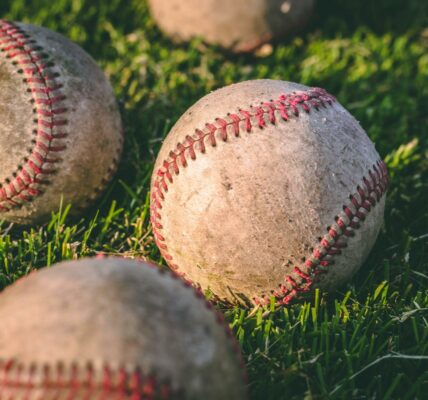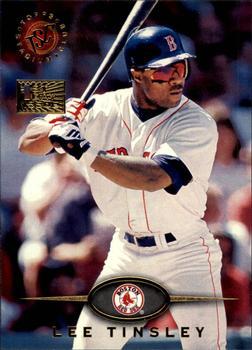Back in the days of Windows 95, PC baseball video games were just starting to come into their own as something more than a simple spin-off of the console versions. As a kid, I wasn’t even that avid of a baseball fan, and I played well with the Nintendo and Sega Genesis console baseball video games.
But, after watching the exploits of Pedro Martinez for the Boston Red Sox, I became fascinated with his dominance as a pitcher. So, I started to gain a lot of interest in the game, and I decided to finally try out a baseball video game for the PC. The first I ever tried, and my first favorite baseball game, was a gem called Hardball 6 released by Accolade in 1998.
At the time, the Hardball series was well documented as being one of the premier baseball video game franchises. Unfortunately, Hardball 6 was not quite up to many critics’ standards. I didn’t actually purchase the game until 1999, the year I truly got into baseball after watching Pedro Martinez strike out three in a row to start the All-Star Game at Fenway Park in Boston, and two punch-outs in his second inning. By this time, to my benefit, some of the game’s major bugs had been patched.
Today, Hardball 6’s many flaws are still obvious, but in 1998, to a relatively new fan of the sport, I loved it. Really, I was just thrilled to pitch with my favorite baseball player of all time to this day, Pedro Martinez. I also loved having another of my favorite players, Nomar Garciaparra of my hometown Red Sox, in my lineup. Beyond that, though, I wasn’t nearly the hardcore Red Sox fan that I would later become. My Red Sox teams looked very different than what the rosters that came with the game offered.
Today, most people think of Sony Entertainment’s MLB the Show when it comes to baseball video games. Indeed, the Show’s proprietary Ignite engine released in 2013 was the first to deliver a gameplay experience that felt just like watching live television. But, before the PlayStation or Xbox, Hardball 6 began the trend of PC baseball games with accelerated graphics and special effects. Despite looking extremely dated today, it blew away any previous sports game in terms of realism.
The Pros of Hardball 6
Hardball 6 had some features that many baseball games didn’t have at the time. While many baseball games had season modes, Hardball 6 actually allowed you to manage a franchise for as long as you wanted. Unlike many baseball games of the time, it was also the first in the Hardball series to use the full Major League Baseball license.
As a baseball sim, it was acceptable; but, for a beginner like myself at the time, it was easy to learn and enjoy. You could make trades, sign free agents, and even draft computer generated rookie players. However, there were no salaries or budgets in the game, unlike the serious baseball sims of the time like Baseball Mogul and Diamond Mind.
Again, though, for the casual fan I was at the time, this served to actually be in the game’s favor. After all, some hardcore sport simulation games like the Mogul series can bog you down in that kind of management, but Hardball 6 kept things simple and enjoyable.
Also, Hardball 6 was easy to play, with very basic controls and interface, meaning you could get into it in a few minutes. You just picked your team, in my case the Boston Red Sox, and jumped right into it. While later I would become extremely into micro-managing rosters and personnel decisions, Hardball 6 let me focus on the core parts of baseball: hitting, pitching, and fielding. To this day, I struggle with manual fielding, so back then is when I often relied on the computer to field for me, sometimes with frustrating or hilarious results.
Also, being able to beat the All-Time Team in an exhibition game was pretty fun. What young baseball fan doesn’t want to strike out Babe Ruth with Pedro Martinez or Randy Johnson? Even better, you could import the All-Time team into an actual league. A funny glitch with created teams, though, is that they would all wear the Florida Marlins uniforms; that was the team who won the World Series in 1997, right before the game was initially released.
One of my favorite things to do with this game was to import the All-Time Team, but also create another team full of whatever free agents were available to sign in the game. I actually took control of the worse team and managed to win a World Series with it several times. It was silly, and having three teams all with Marlins uniforms was extremely stupid, but looking past the obvious discontinuities, it was a load of fun.
The Cons of Hardball 6
The major drawback of Hardball 6 is that while it was actually an impressive technical achievement at the time, it actually had many flaws. Some have to do with just how new 3D accelerated graphics technology was at the time. The animations, while fluid, were often clunky. The player models were human enough, but featured only one of three different faces, light-skinned, tan-skinned, and dark skinned.
The controls were good, but the game never really played like a true simulation. It looks like a good simulation, but it plays more like an arcade game. If you got the timing down and had a line-up full of sluggers, you could run up the score very quickly. This is true in many sports games even to this day, but if you saw some of the stats I racked up, you’d quickly watch the realism fade into cartoonish numbers.
Also, while the management system wasn’t bad, it was quite limited. Again, all created teams were forced to wear Marlins uniforms. The trade system, despite having “smart” AI, usually involved simply taking two bad players and trading them for an All-Star. I built super teams very easily, thanks to signing random free agents as trade fodder.
But while its presentation was cartoonish and there were some crazy glitches where the ball would roll forever and players would run through the walls, Hardball 6’s flaws really end there. It’s just not as “real” as Accolade hoped it would be. But, it was plenty of fun; just after awhile, especially when compared to games that came in just the next several years, it looked and felt dated very quickly. It has not aged well at all.
Hardball 6 and Its Influence on My Baseball Video Game Fandom
Thanks to my fun with this game, I also soon purchased Microsoft Baseball 2000. But, that and its sequel, Microsoft Baseball 2001, hold a much different place in my heart. My dedication to Hardball 6 greatly overshadowed pretty much every other baseball game I had, though. Before EA released their now classic MVP Baseball series, I never played any other baseball game nearly as much as Hardball 6.
Unfortunately, Hardball 6 is not too easy to run on newer computers, despite the fact I still own the original CD. Thanks to its extremely dated graphics system, the game can’t seem to help but glitch out on modern hardware. Therefore, I highly doubt I’ll ever actually get to experience this game again on my own hardware.
Everyone’s fandom in their favorite video game genre begins somewhere, and Hardball 6 was my way of learning the league and its players, while also familiarizing myself with the playing fundamentals. I wouldn’t be the baseball fan I am today without the dozens, if not hundreds, of hours I spent playing Hardball 6.
How Has Hardball 6 Held Up in 2024?
When I got the chance to actually play Hardball 6 again on my retro gaming PC, I’m sad to say the game really hasn’t held up well over the years. Comparing it to Microsoft Baseball 2001, its gameplay is a bit too arcade-like. However, it is still fun for nostalgic purposes. I was able to trade for a pretty strong team with the likes of Ken Griffey Jr and Barry Bonds in the outfield, thanks to odd trade logic in the game’s league mode. I even had Randy Johnson on my pitching staff!
After building my team up with a flurry of trades, I played a couple of games to get a feel for the team. After blowing out the Royals a couple of times, I simulated the season. My team won 116 games and easily made the playoffs. We blew up the Orioles, then the Texas Rangers. We faced the Pittsburgh Pirates (yeah, how did that happen) in the World Series, and I played Game 6 all the way through. My team was just too overpowered on offense, so when I played, it was a slugfest entirely in my favor. That’s not to say it was simple; the other team still gets plenty of hits so the game stays interesting even if the score says otherwise.
After winning the World Series, you get to move ahead to the next season. A bunch of older players retire, then the game allows you to draft 18 to 20 year old versions of retired players from its database. So, the game continually injects fresh blood into the game, but with the names and ratings of past players. It’s kind of silly, but I’m thinking the most fun I can get from this game twenty five years after its release is just simulating season after season. See what crazy names emerge as hot young talents.
So, yes, Hardball 6 was the death knell for that series. Microsoft Baseball 2001 was a far superior game that came out the next year. Triple Play became very popular, as did High Heat Baseball, although both are very flawed in their own ways. The truly great baseball video games emerged with the MVP Baseball series, and later the Show series that’s ongoing to this day. There are the 2K sports games too, which have their place in baseball video game history…
If I want to play a baseball game in 2024, I’ll just play MLB the Show on my Nintendo Switch. But for nostalgia purposes, revisiting Hardball 6 from time to time is still a joyful experience. Still, I could never play through a whole season in that game again. That being said, if you want to build a team chock full of late 90’s MLB stars while using the in-game trade system properly, few games can deliver that experience the way Hardball 6 can.
Hardball 6 wasn’t the best PC baseball video game ever, but it was the first I ever seriously played. So, despite all of its flaws, it remains among my all time favorites.
~ Amelia Desertsong










